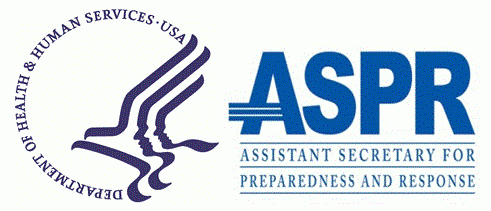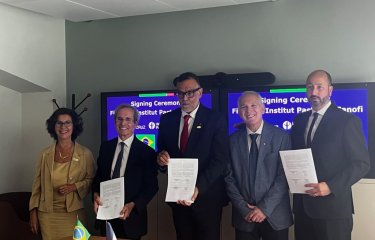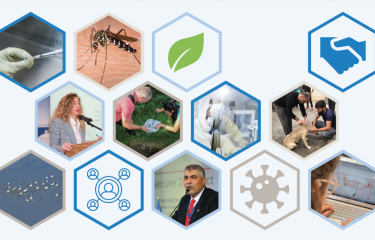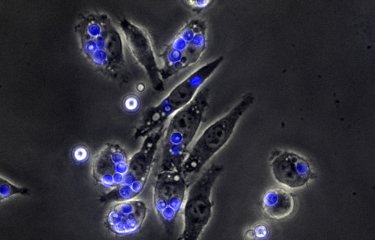Celebrated every year in mid-April, Bon Chaul Chhnam, the Khmer New Year, is one of the most important festivals in Cambodia. For the Institut Pasteur du Cambodge Virology Unit, it is also a time of intense mobilization. Supported by the Cambodian National Animal Health and Production Research Insititute, the researchers pay frequent visits to the live poultry markets to monitor the circulation of avian influenza viruses, in particular highly pathogenic A(H5N1) viruses.
In most Asian countries, live poultry is brought to the local market before being slaughtered on site and sold to individuals or restaurants. Therefore, these places are hotspots for the circulation of avian viruses. In 2011, researchers at the Institut Pasteur du Cambodge set up virological surveillance in markets in Phnom Penh, as well as in Takeo and Kampong Cham, two provinces south and east of the capital respectively. They observed that festival periods, such as Khmer New Year, are high periods for in the circulation of avian influenza (1). In 2013, a second study showed almost constant circulation of avian influenza within the markets and detection of these viruses peaks the week before the main holidays: Lunar New Year also known as Chinese New Year (usually between early and mid February) and the Khmer New Year (mid-April). These peaks in circulation are most pronounced in the markets of Phnom Penh, and reflects what is happening in the rest of Cambodia (2). "The demand for chickens and ducks explodes during these times. There is a massive influx of poultry to markets and up to 80% of these poultry can be infected with avian influenza," explains Dr. Philippe Dussart, head of the Virology Unit at the Institut Pasteur du Cambodge.
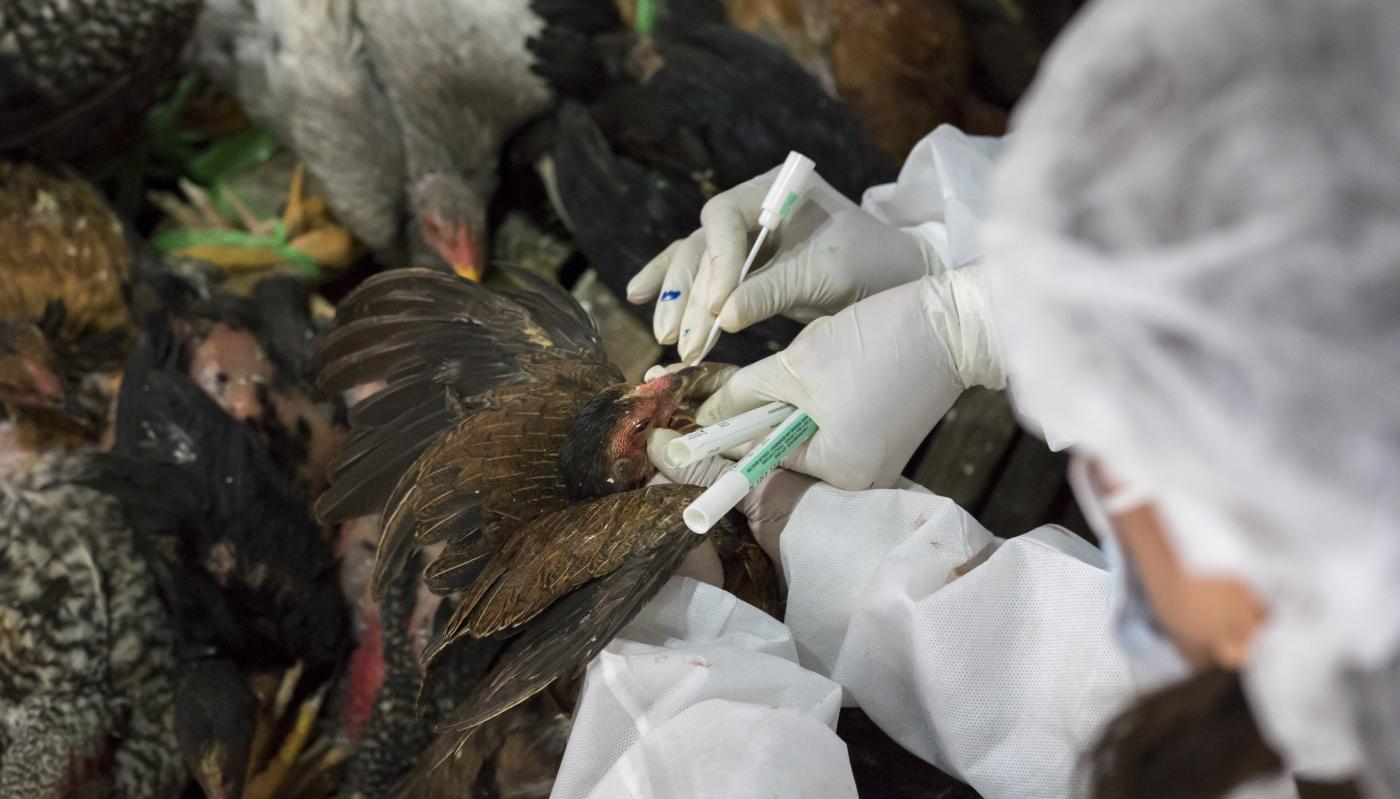
Orussey, the largest poultry market in the country, is under close surveillance. Up to 80% of poultry can be infected with avian influenza. Photo credit: Institut Pasteur - Dominique Tardy
Therefore, surveillance has been focused on Orussey, the largest live poultry market in Phnom Penh (3). Animals arrive en masse both from the southern provinces near Vietnam and from the northwest provinces near Thailand. As a hub for slaughter and sale as well as transit, this market fuels the circulation of the viruses that cause « bird flu. » In terms of public health, this is a strategic location to quickly detect any viral emergence in order to alert the authorities to prevent the spread in animals and potentially in humans. "From a virological standpoint, we have an exclusive circulation of the same variant of the influenza A(H5N1) virus since March 2014. The last human case in Cambodia dates back to that time. Nevertheless, we are still monitoring other subtypes such as H7 and H9 viruses "continues Dr. Dussart. And for good reason, since 2013, China has suffered five successive epidemic waves of A (H7N9) virus. The last one in 2017 caused more than 1,000 human cases. "We are preparing for this virus to emerge soon in other Southeast Asian countries."
GPS tracking to trace the origin of avian influenza viruses
Where do these viruses come from and how do they spread in Cambodia? To answer this question, in 2017, the team of virologists in collaboration with the Epidemiology and Public Health Unit of the Institut Pasteur du Cambodge decided to focus their studies on the middlemen that transport poultry. Their reasoning is simple: the influenza A(H5N1) virus is highly pathogenic in poultry, meaning once infected they usually die within 24 to 72h. Therefore, animals found positive for this virus in the markets have recently been infected in places where they were previously housed and it is crucial to go back upstream to find these "hot spots" of infection.
Sensitive work then began to identify middlemen and to convince them to allow the installation of GPS devices on their vehicles. Finally, their first intermediary agreed to collaborate in April 2017 in Takeo province. "We were able to analyze his business trips during the Khmer New Year, the way he supplied his customers and the surrounding local markets. At the same time, we took samples in the local markets and places where animals were stored. By combining spatial and virological data, we hope to be able to identify potential sources of viruses and better understand their distribution and dissemination. The final objective is to propose prevention and awareness strategies for the most exposed populations," comments Dr. Erik Karlsson, Senior Research Fellow in charge of respiratory virus surveillance and research programs in the Virology Unit.
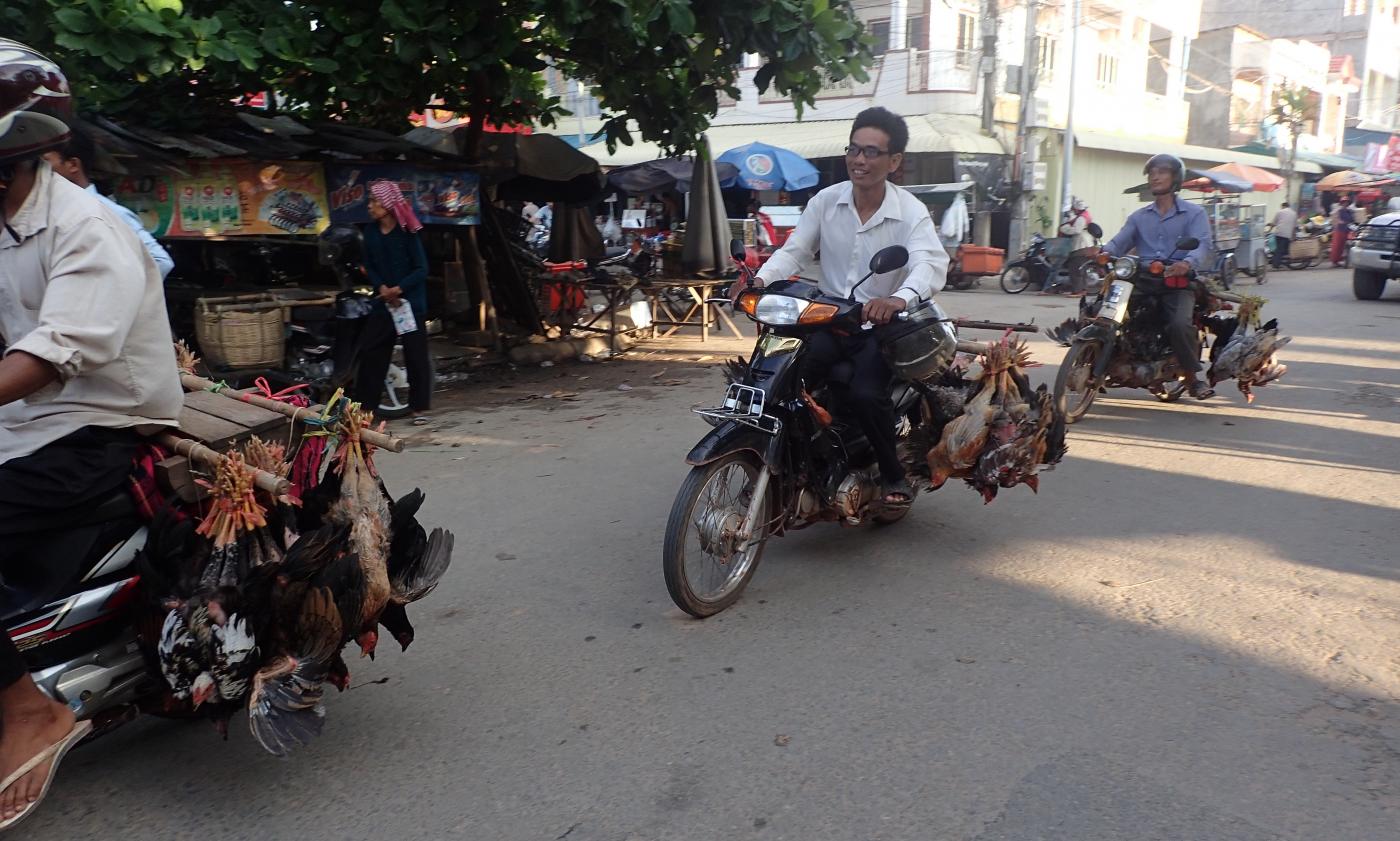
In Cambodia, poultry is often transported with motorcycles. Putting GPS on these vehicles can help better understand how the bird flu virus circulates. Photo credit: Institut Pasteur du Cambodge - Etienne Chevanne
Today, almost a dozen middlemen are participating in this project to have a broader coverage of the poultry supply network in the country. "An intense follow-up campaign combining tracking movements of poultry middlemen from the provinces to the capital and the sampling of poultry at different storage points was conducted around the Lunar New Year in February 2018. This experiment will be repeated in April 2018 around the Khmer New Year "continues Dr. Karlsson. The first results should be available during the last quarter of 2018.
In addition to influenza surveillance in poultry, the Virology Unit also conducts surveillance for severe acute respiratory infections in children in close collaboration with Kantha Bopha Foundation hospitals in Phnom Penh and Siem Reap. All of this work is part of the ASIDE project (Alerting and Surveillance for Infectious Disease Epidemics). Coordinated by the Institut Pasteur, the ASIDE project aims to strengthen the public health capacity of 6 partner countries of the Institut Pasteur International Network in Sub-Saharan Africa and South-East Asia (*) to better prevent, detect, report and respond to health emergencies of international concern.
* Pasteur Center in Cameroon, Institut Pasteur de Bangui, Institut Pasteur du Cambodge, Institut Pasteur de Côte d’Ivoire, Institut Pasteur de Dakar, Institut Pasteur de Madagascar
1. Horm SV, Sorn S, Allal L, Buchy P. Influenza A(H5N1) virus surveillance at live poultry markets, Cambodia, 2011. Emerg Infect Dis. 2013;19(2):305–8.
2. Horm, S. V., Tarantola, A., Rith, S., Ly, S., Gambaretti, J., Duong, V., … Buchy, P. (2016). Intense circulation of A/H5N1 and other avian influenza viruses in Cambodian live-bird markets with serological evidence of sub-clinical human infections. Emerging Microbes & Infections, 5(7), e70–
3. Horwood, P. F., Horm, S., Suttie, A., Thet, S., Y, P., Rith, S....Dussart, P. (2018). Co-circulation of Influenza A H5, H7, and H9 Viruses and Co-infected Poultry in Live Bird Markets, Cambodia. Emerging Infectious Diseases, 24(2), 352-355.
